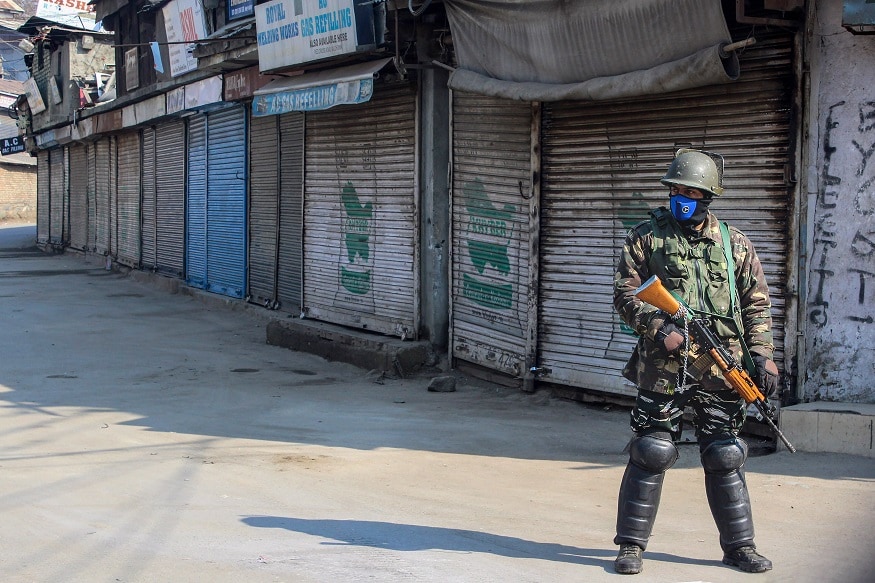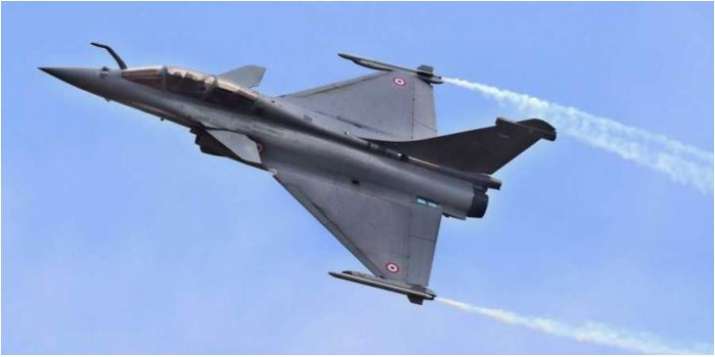SOURCE: SUNDAY GUARDIAN LIVE

Donald Trump the President is different from “Donald Trump the Trader”! Even as the whole world is coming to know this part of President Trump’s personality, be it China, UK, Canada or even the whole of Europe doing trade and business with the US, perhaps India needs to know more about the “world’s most-powerful guest” it hosted earlier in the week.
Had that homework on Trump’s business instincts been done in advance, we would not have worried much about the “unfinished trade deal” baffling many economists and anchors in national TV studios during the two-day visit. Every TV anchor was anguished for a common answer: “What did India get from this otherwise spectacular show and why didn’t the trade deal come through?”
President Trump’s “monopolistic trade instincts” can be summed up in the words of Dani Rodrik, a Professor at the John F. Kennedy School of Government at Harvard, who was earlier quoted as saying: “Trump seems to be the archetypal businessman with mercantilist instincts…Open your market for me to do business in it, but you can have access to mine only on my terms.”
Fortunately, that’s not the case with India and in fact a deal happened on that count, but in a great symbolic way—India got level player status in doing business with the US under President Trump, a status he has not extended to many countries he’s currently doing business with. No wonder, America is having the worst of business relations with Europe, China and is having even some regular niggles with Canada.
Michael Kugelman, a top South Asia analyst and India watcher at the Woodrow Wilson Center puts it right: “Both sides want a deal, but both sides also need to be careful. These are two tough negotiators with populist politics, and neither will want to agree to a deal that could be perceived as imperilling jobs at home. For Trump, there’s a particular urgency in getting a deal before the presidential election. He wouldn’t want to go into the election having gotten a trade deal with China, a top US rival, while coming up empty with a key partner like India.”
India enjoys the confidence of America as being the “partner-to-be and the market-to-be for future”. The US doesn’t want to rush into things without both sides completely satisfied before the formal trade deal gets stamped. Perhaps that’s the biggest business scoring point, currently.
But not missing the point, what top South Asia analysts in the US say is, the “positive tone of bureaucracy will be detrimental to get this trade deal and many facets of Indo-US relations put in high gear”.While President Trump said a “fair balance of trade between the two countries will be the hallmark of new trade ties,” another senior official was quoted as saying, “the trade and economic relationship with India is critically important to the US, and I think also access to the US market is critical to the Indian government…We do want to make sure that we get this balance right. We want to address a bunch…of concerns, and we’re not quite there yet.”
It’s self-explanatory and the tone is being set right. Perhaps, this is not the right moment and India needs to thrash out many hurdles before it joins the US as a friend and perfect trading partner. Sooner than later, it (trade deal) is bound to happen as in the current global dynamics, India emerges as the most “viable and honest trade partner” for the US and in return, India doesn’t want to be a dumping ground, but wants to benefit as being the manufacturing hub and markets of many American businesses and goods from its soil.
This will require a deft economic outlook and an open-minded, yet dignified approach in dealing with the counterpart US trade department.
Time is running out though and India needs to set its priority right. With China out of the question due to worsening trade relations, a process that started last year, and now the deadly coronavirus is shutting all doors of global business deals on the Asian giant, with US and European companies pulling out, India has an opportunity in this global health crisis to seize the moment and not let the American markets go away. Both America and India converge strongly on the point of seeing China as a potent threat as they do on the issue of terrorism and security matters in Asia and the Indo-Pacific region.
PM Modi’s direct involvement in trade with US President Trump, who understands full well that who he’s dealing with (a tough negotiator), gives the fair balance of business in offing. Without compromising on the “national stakes and genuine concerns” in the field of agriculture supplies, medical supplies and many consumer items, a consensus can be built around the big picture objective to “equally benefit the oldest and largest democracies.”
Prof Walter Andersen, a former State Department official and ex-Director of South Asia Center at Johns Hopkins University in Washington DC, says: “The tempo has been set and the message is clear to bureaucracy from both President Trump and PM Modi to get it working.”
Andersen told The Sunday Guardian: “Mainly, it was a sympathetic ear from the President. That translates into more serious attention from the bureaucracy on both sides. Bureaucracies always have a powerful role on policy as they shape implementation (and can delay or stop if so inclined). I heard the President at his South Carolina rally on Friday say he got along greatly with PM Modi and felt he (Modi) was working great things for India. Also that the Republicans are putting together a major effort to get Indian-American vote in the forthcoming elections.”
Kugelman adds, “If there’s anything that can be concluded, it’s that India got Trump’s assurances that he’s committed to getting a deal, at some point down the road.But the Wilson Center’s South Asia expert also said: “There are certainly things about the relationship that bother both sides, with bureaucratic issues high on that list. While the issue of the leaders’ chemistry has figured so prominently in stories about this relationship for quite some time, it’s important to move beyond that and focus on strengthening institutional and bureaucratic chemistry as well. That’s the type of chemistry that matters the most.”
Coming to the point on why even Mr Trump couldn’t strike a trade deal despite hinting to his voters that he would strike one with India, Aparna Pande, Director at the Hudson Institute says: “It is difficult for two populist, nationalist and protectionist administrations to resolve trade issues, most of which have been brewing for a few decades. Instead of trying for something big, which is always difficult, maybe the two sides should try to resolve some of the small issues first and build the trust that will resolve the bigger areas of friction. Here the strategic relationship can be used as an example: India and the US found it easier to start off with military exercises before signing logistical agreements and finally moving to Quad…Both countries view each other as natural, strategic and long term partners and allies.”
While America needs markets and India needs jobs, both President Trump and PM Modi are in the mood to leave each other. Doing so, the economy of the respective countries may not get the booster which both strong nationalist and popular right wing leaders desire. Both Trump and Modi are trying to expand the scope of trade and strategic agreements, while their bureaucrats and ministers—mutual conflicts of business interests.
As Kugelman points out: “My sense is that at some point in the coming months, something will give. There have been so many high-level trade talks, and plenty of goodwill has been built up. If we give it some more time, I imagine the two sides will be ready to pull the trigger at some point before November.”
The non-security side of the relationship has a whole lot of potential, especially if you stay away from the core tension points. Says Kugelman: “Energy, for example, has potential written all of it. US energy exports to India have surged, and India clearly has a desire for more. Cyber is another huge area. There’s a lot of best practices and other inputs to share. Finally, with coronavirus now the biggest story in international affairs, medical and scientific exchanges leading to cooperation on managing disease epidemics can be a key area to look at.”
Adds Pande, “The India-US relationship today is more than personal chemistry of leaders or officials. Over the last two decades there has been a growth in bonds between the two civilian and military bureaucracies but these take a longer time. We need to encourage more engagement, more meetings and more joint trainings and interactions of the bureaucracies so that the relationship is institutionalized.”
Interestingly, this will sound music to many Indian ears. It is America’s call now to strike the deal benefitting both, says Kugelman: “Trump always likes to pull the trigger on big deals and boast about it. If he can get a trade deal with one of the biggest countries in the world, that’s something he’ll want to talk about on the campaign trail. It will serve his voters and also send a positive message to the large Indian-American vote bank!”





























